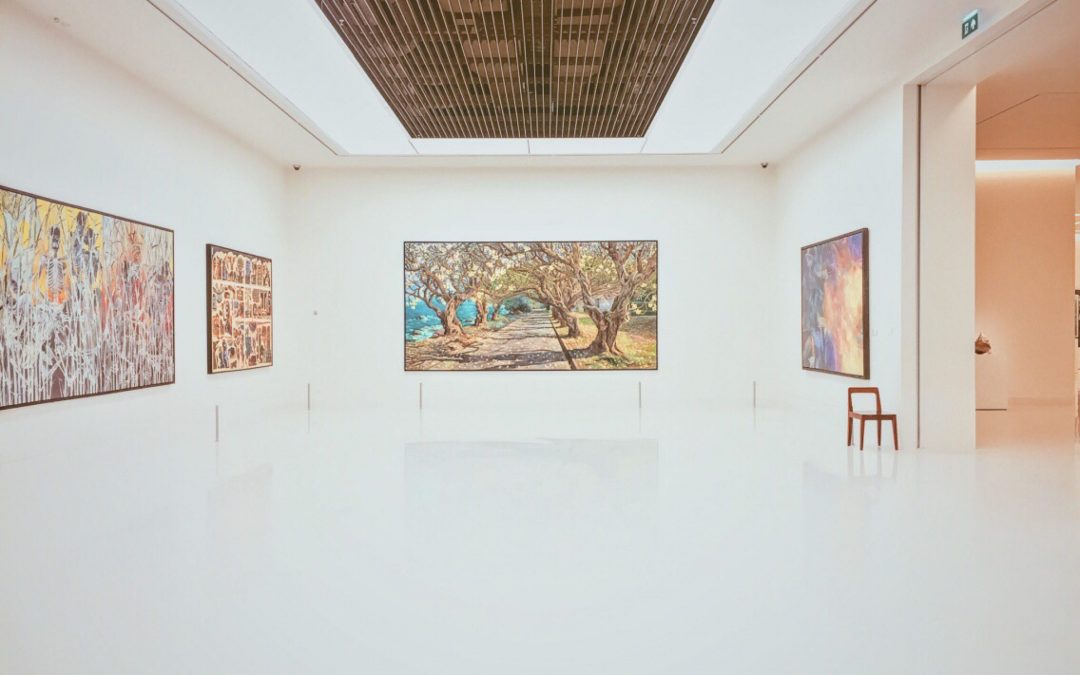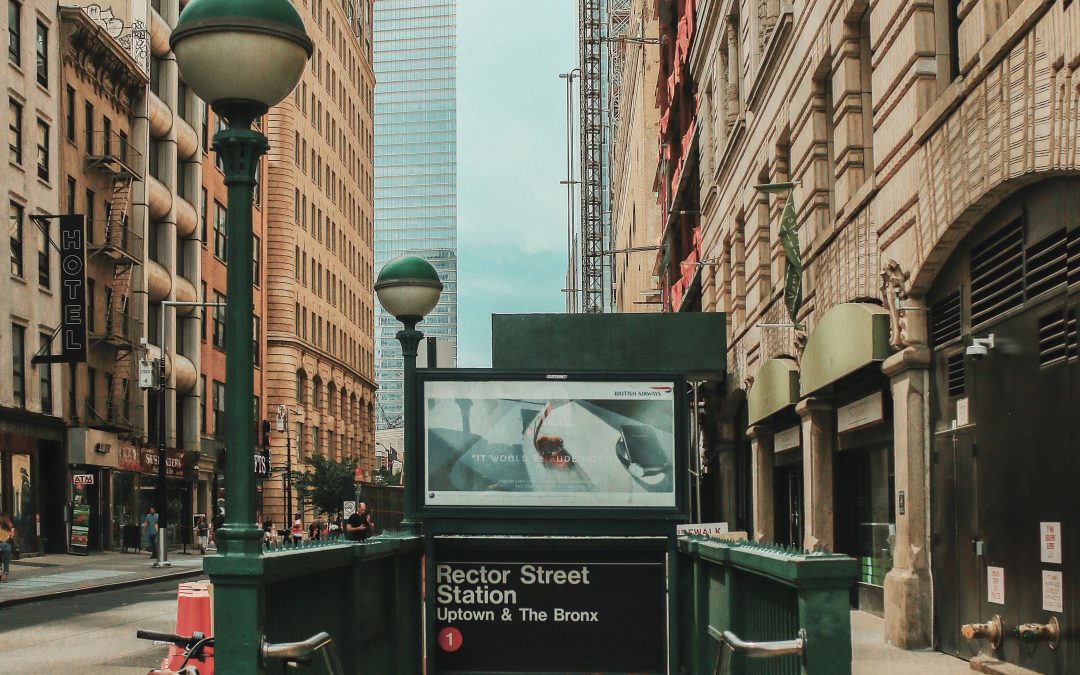
by BCB Property Management | May 16, 2017 | History, New York City
Want to combine your sophisticated affinity for natural history with your childish love of sleepovers and Ben Stiller flics? New York City’s American Museum of Natural History has a solution for adults hankering to bunk beneath the blue whale: a Night at the Museum sleepover series, which has officially returned this spring.
2017 won’t be the first year the AMoNH lets grown-ups stay overnight in the historic museum for a night to remember. This year will be the fourth to celebrate this swanky tradition, but could be the spookiest yet considering the museum’s current Mummies exhibit. Scared of sarcophagi at night? Rest assured that if the museum’s contents were to come to life, the dinosaurs would probably get you first anyway.
As always, the grown-up iteration is classy affair for 21+ adults only. Imagine this: the night begins with a champagne reception and music by the acclaimed 12th Night Jazz Trio in the Theodore Roosevelt Memorial Hall. Guests are free to roam the floor to view dinosaurs, exotic mammals, and more by night and without the usual pack of kids pressing their noses to the glass. Though with champagne in the mix, we can’t guarantee adults won’t do the same.
A delicious buffet dinner along with wine and beer will also be enjoyed by nocturnal explorers, along with a fossil factfinder tour by flashlight and, bringing literal life to the museum, a live-animal special exhibition. After a nighttime snack, cots are provided for a gentle slumber beneath the 94-foot blue whale in the Milstein Hall of Ocean Life. In the morning, you’ll get a light breakfast snack and memories to last a lifetime.
If this sounds too good to be true, you won’t be surprised that the experience comes with a somewhat-hefty price tag. Members pay $300 for admission, non-members pay $350. For some, this may be a big ask—but if you think about all that’s included (food, drinks, museum activities, boarding), plus the fact that proceeds help support the museum, for those who can afford it the benefits are clear.
The first sleepover took place on May 5, and the next will go down on June 30th. For adventurers with disposable incomes who don’t fear the dark, purchase tickets here.

by BCB Property Management | May 1, 2017 | Neighborhoods, New York City, Real Estate
New York City is a beautiful, historic city with some of the most lovely and desirable neighborhoods in the country. But the Big Apple also has a ghost problem. In the always-desirable New York housing market, behavior at each end of the economic spectrum illustrates why New Yorkers looking for a place to live can face considerable difficulties.
First up: Ghost apartments. Not literally haunted, ghost apartments are units that are owned by a wealthy person (or a shell company) that, for the most part, remain unoccupied.
Why is this a concern? There are multiple reasons but, primarily, it’s the hidden costs associated with the empty apartments that contribute to the overall housing challenges in New York. Starting with the most obvious impact—there’s no one living in the apartment. That means that a costly piece of real estate has been purchased or rented, but no money is flowing into the economy on that street. If no one lives in the apartment, there is no one shopping at the corner store, eating out, joining the neighborhood gym or even grabbing the occasional cup of coffee.
The math is pretty simple. Fewer housing units mean fewer people, less foot traffic, and not as much need for local goods and services.
There’s a second major impact on the housing economy when wealthier residents rent an apartment, rather than purchasing a single-family home—taxes. Single-family homes in New York are taxed at a higher rate and produce more tax revenue than a single rental unit generates.
Finally, there’s the cost to the average New Yorker—time. When “ghost apartments” become common, residents may move further away from their place of employment, or areas that are familiar socially. Walking is replaced by long commutes, and employers have less ability to hire hyper-locally.
So, what’s an average New Yorker to do?
Some choose to go off the books and become ghost tenants, another not-so-supernatural phenomenon. Ghost tenants are people (adults) living in an apartment without being on the lease, or having any formal status as a tenant. According to a 2016 article in Slate, which focuses on public housing, “Although 400,000 people officially live in New York City’s traditional public housing units, it’s estimated that as many as 100,000 to 200,000 more reside there secretly.”
The market rate for a one-bedroom apartment in New York, in 2015, was $3,100. In the Slate article, the Ghost Tenant “Gigi” was sharing a mid-town apartment, with her parents, in a public housing project that rented for under $1,000.
If “caught” the whole family can be evicted from public housing. In both public and privately owned buildings, more tenants mean more wear-and-tear on facilities which can lead to hazardous or unpleasant living conditions. At best, the rent will increase based on the income that’s brought to the household by the ghost tenant, which is hardly helpful in reversing the problem.
Then there are communication and safety concerns. If a ghost tenant has a P.O. box and no official street address, they are harder to find, by, say, a school or employer, if needed. If there’s a problem in the building—a gas leak, a fire–emergency responders won’t know to look for the ghost tenant.
When it comes to real estate, it’s best kept balanced and affordable when the appropriate amount of tenants live in an apartment, and when the owners of said apartments actually live there. But eradicating these ghosts is easier said than done, and productive solutions remain few and far between.
It’s clear that ghost apartments and ghost tenants are part of the New York real estate landscape, and one the Ghost Busters can’t solve. These issues, present on both ends of the economic spectrum, must be addressed by developers focusing on building, refurbishing, and maintaining housing units that are affordable by the average New Yorker who lives in the wonderful city so many call home.

by BCB Property Management | May 1, 2017 | Brooklyn, Neighborhoods, New York City, Real Estate
When one door closes, another opens, and though this is not always the case for bookstores, the adage is holding true in Cobble Hill—to some extent, anyway.
The Brooklyn neighborhood recently suffered the news that BookCourt, a Cobble Hill staple, would be closing after 35 years in business when its owners retire at the end of the year. This news came not long after the neighborhood’s chaotic but lovable bookstore, aptly called Community Bookstore, was cleared of its unkempt stacks.
Luckily, another independent bookstore is in the works, and in a world where it sometimes seems bookstores big and small are losing business, it will be a welcome addition.
The new store, called “Books Are Magic,” is set to open on or around May 1. While the name may seem a little trite, most bibliophiles can agree that books are magic (if not actually, then certainly metaphorically). The new store is a business venture by Emma Straub, author of novels such as Modern Lovers and The Vacationers, and a former employee of BookCourt. According to her website, “A neighborhood without an independent bookstore is a body without a heart. And so we’re building a new heart.”
The store will be located on 225 Smith Street between Butler and Douglas, not far from BookCourt’s old location. As she’s been preparing for the opening, Emma has shared her journey on social media and with the press. She’s even hinted at collaborations with neighbors including Warby Parker and the cheese shop Stinky Brooklyn. Books, glasses, and cheese? Sounds like Brooklyn alright.
One independent bookstore replacing two may not be ideal for residents used to having their choice of store, and the “two out, one in” is annoyingly reminiscent of the Trump Administration’s regulation policy. With Barnes & Noble just a short walk down Court Street, too, it seems the community’s dedication to books (or magic, if you will) will live on.
And who knows? Maybe another overstuffed literary treasure trove will pop up to fill the hole left by Community Bookstore, too. Stranger things have happened in Brooklyn.

by BCB Property Management | Apr 10, 2017 | Brooklyn, Neighborhoods, New York City
New York is finally starting to thaw out from a nasty, wet, snowy winter. The days of warm afternoons and late sunsets are upon us again, and that means that plenty of fun happenings are taking place, whatever you’re into. Here are some exciting events where you can best take advantage of the turn of the season.
Governor’s Ball Music Festival
For the young and the young at heart, there’s nothing like an outdoor music festival to make the best of the warm weather. This year’s Governor’s Ball (June 2-4) boasts a star-studded lineup with headliners including the red-hot Chance the Rapper, perennial indie favorites Phoenix, and the return of 90s rock legends Tool to the NYC area after 11 years. Not to mention an undercard of over 60 bands representing every genre from dance-pop to experimental hip-hop, rock and soul. Single-day tickets are available too if you don’t feel like making a weekend of it.
Hanami Cherry Blossom Festival
Long a favorite destination for Brooklynites, the Brooklyn Botanic Garden pulls out all the stops at their yearly Sakura Matsuri Cherry Blossom Festival (April 29-30). The stunning cherry blossoms promise to be in full glorious bloom while you stroll through the picturesque grounds taking it all in. The Festival also includes several exhibitions of historic Japanese culture including Taiko drummers, samurai sword displays, a Japanese tea room, and art gallery. There’s also a flea market so you can take a little bit of the celebration home with you.
Affordable Art Fair
Whether you want to pick up something to class up your apartment or just enjoy the scenery, the Affordable Art Fair (March 29-April 2) has something you’ll enjoy. Over 70 artists from Buenos Aires to Tokyo will be there to exhibit their works, with prices a touch cheaper than the usual art-world fare. Even if you’re not the type to drop more than $100 on some museum-quality artwork, feel free to grab a cocktail and take a stroll through the gallery. At $18 a ticket, it’s cheaper than a trip to MoMA. Workshops for kids are also available, so feel free to bring the whole family.
Five Boro Craft Beer Fest
The NYC craft beer scene is one of the most robust in the country, and the vendors at the Five Boro Craft Beer Fest (May 12) will be more than happy to show you why. Beer mavens from local breweries ranging from the renowned Brooklyn Brewery to up and comers like Long Island City’s Big Alice Brewing will be at the Bushwick fest to meet and greet and, most importantly, imbibe. All-you-can-drink 2 ounce tastings, a home brew contest, and live music make this an event no beer lover will be willing to skip.
NYC Taste of the Nation
If you’re looking to give back a little while you enjoy yourself, you can indulge while helping a great cause at NYC Taste of the Nation (April 24). Benefitting No Kid Hungry, a national charity devoted to ending childhood hunger, this festival brings together over 50 chefs and bartenders to curate a wide-ranging culinary experience. Sample different dishes as well as unique attractions like the Candy Carnival and Donut Derby. You won’t leave hungry, and your ticket will help ensure that kids around the city won’t be, either.

by BCB Property Management | Apr 10, 2017 | Neighborhoods, New York City, Real Estate
Some real estate professionals say there’s no doubt north is the way to go.
With only Manhattan separating them, is it time for the Bronx to admit that it has more in common with Brooklyn than previously thought?
According to some real estate professionals, the answer is a resounding yes. Even if the idea of the Bronx being a great place to live or invest raises eyebrows from hipsters to former-hippies now comfortable in their Manhattan apartments.
Consider this bit of history. When the Sex and the City character, Miranda, announced she was moving to Brooklyn the idea was so abhorrent to Manhattanites that the New York Post ran an article listing all the (real-life!) hip spots that Carrie and Miranda could frequent.
Now, only a decade later, Brooklyn’s average rent for a one-bedroom apartment runs between $1,600 and $2,900, depending on the neighborhood. It costs about $790,000 on average to buy a home, and well into the millions in trendier neighborhoods.
What’s a dedicated middle-class New Yorker to do?
Manhattan? Probably not with rents running $3,000 and buying about a $2 million endeavor.
It may be time to head north.
First, there’s the basic premise that Brooklyn prices are continuing to go up, so the Bronx is a more affordable option given the average rent of $1,200/month.
But consider the other benefits of the Bronx, like great transportation. The subway and other public transportation options are excellent—and traveling from midtown to the south Bronx is a fairly short commute.
For example, it’s only a 24-minute subway ride from Radio City Music Hall to Yankee Stadium. The residential areas just north of the stadium are considered up-and-coming, and affordable, according to multiple sources.
If driving is a must, it’s actually possible in the Bronx. I-87 along the west side of the borough is far easier to navigate than, say, the lower east side or Time’s Square.
For the more green-minded commuters, the recent opening of the historic High Bridge (New York’s oldest standing bridge, originally used to transport water from the Croton River to New York) offers a quick, convenient pedestrian and bicycle route from Highbridge to Upper Manhattan.
Not only are the rents in the neighborhood still reasonable, but the apartments are often in renovated historic buildings, originally constructed in the 1920s and 1930s.
For even more gorgeous, historic, architecture the buildings along the 5-mile stretch of the Grand Concourse are an excellent option. While this area, originally inspired in the early 1900s by the Champs-Elysees in Paris, fell into considerable disrepair in the 1970s and ‘80s, an $18 million restoration and landscaping initiative in 2008 revitalized the neighborhood.
Further north still is Fordham Heights, which is flanked by both the Bronx Zoo and the New York Botanical Garden, and much more affordable than the real estate near Central Park.
Continuing north (no worries, not Niagra Falls!) recent re-zoning along Webster Avenue has created spaces now open to residential development that is working and middle-class friendly.
While these areas are not all a short commute to the culture and delights of Manhattan, they are still within close enough proximity (about an hour on public transportation) for trips into the city, business meetings, or even daily commutes.
Plus, culture and great food is already a part of the Bronx! In addition to the Zoo and the Garden, multiple colleges and universities offer music, dance and theatrical events.
The food scene? Solid—and growing.
Many New Yorkers believe that the Bronx is home to “real” Little Italy. Practically disdainful of catering to tourists, Arthur Avenue in the Belmont Neighborhood is still lined with Italian shops, markets and restaurants that have been there since Italian immigrants settled the neighborhood in the 1950s.
For the real “foodies” of New York, it’s good to know that there’s a culture of food that’s diverse enough to bring Anthony Bourdain to the Bronx.
In 2014, CNN aired a Bronx episode of Bourdain’s show “Parts Unknown.” Bourdain sampled Arthur Avenue’s Italian offerings, but dove whole-heartedly into Puerto Rican, African and Caribbean dishes.
“If the Bronx were a neighborhood in Manhattan, sort of shrunk down, you’d have hipsters crawling all over this place.” Bourdain quipped.
Affordable, easily accessible by public transportation, and with vibrant neighborhoods and ethnic diversity–in a New York minute the Bronx may beat Brooklyn as the place to live.





